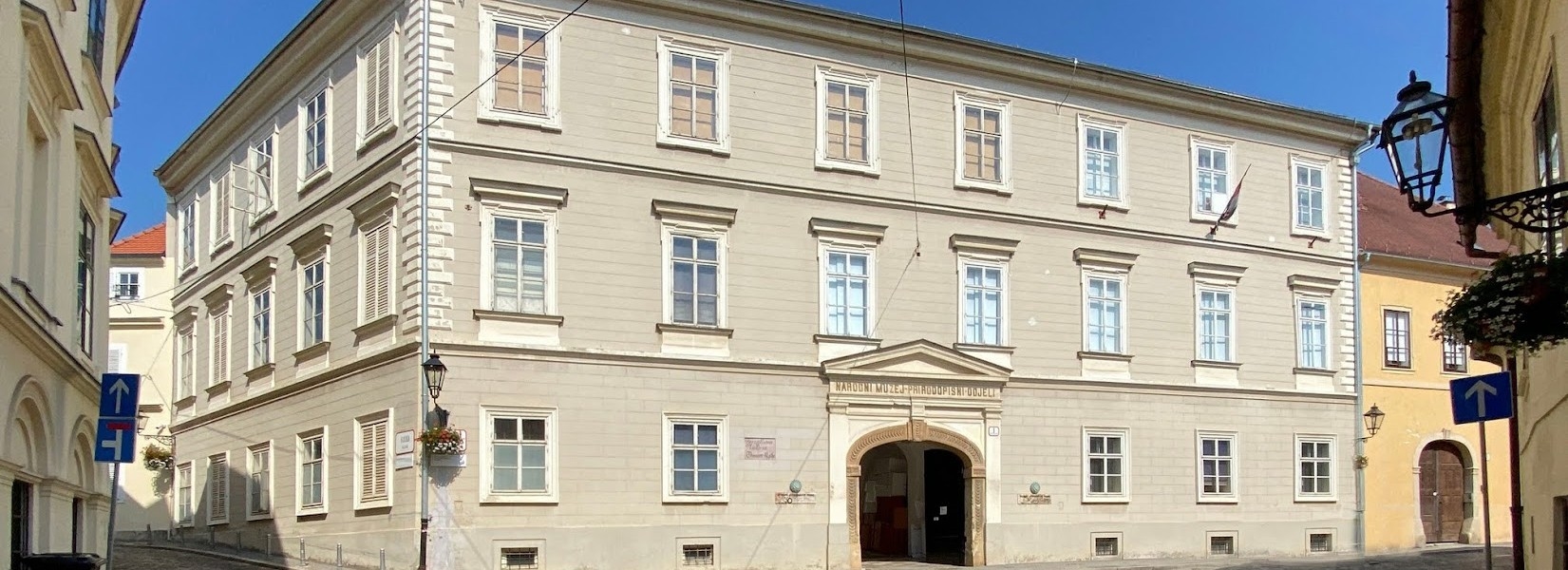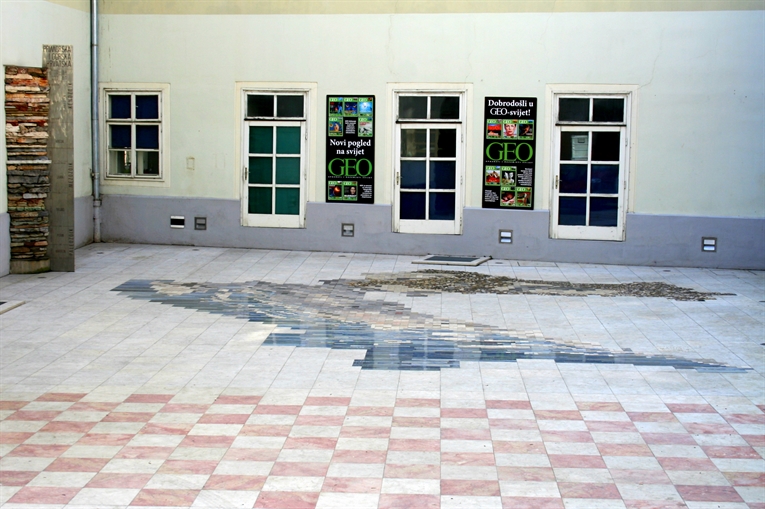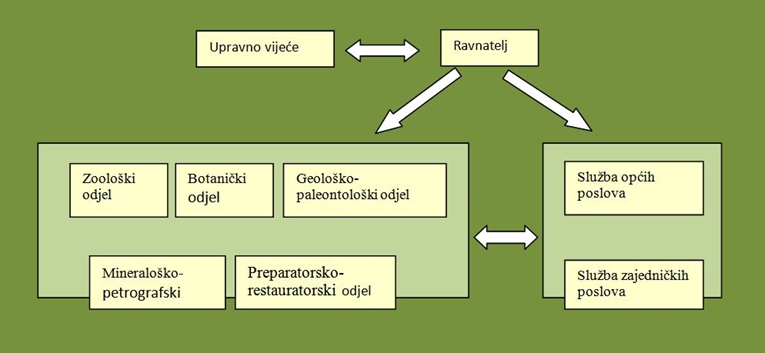

Demetrova 1
Zagreb
Phone +385 1 4851700
hpm@hpm.hr
Monday – Friday
8 a.m. – 4 p.m.
The Croatian Natural History Museum, one of the largest museums in Croatia, is housed in a historic noble palace on the ramparts of Zagreb’s Upper Town. Zagreb’s first public theatre, the famous Amadeo Theatre, operated in that same palace from 1797 to 1834. The theatre was named after its founder and director, the Hungarian count Anton Amade de Varkony, who was also the great county prefect of Zagreb.
The beginnings of today’s rich collections of the Museum originate from the First Academy in Zagreb, as well as from the rich period of the Croatian National Revival, when in 1846, the National Museum was established in the Opatička Street. Initial modest collections were enriched over time, and particular momentum in collecting natural objects (minerals, ores, fossils, plants and animals) continued with the work of prominent Croatian and world-renowned and recognized natural historians. Special contributions were made by professors at the University of Zagreb and first museum experts, Spiridion Brusina, Gjuro Pilar and Dragutin Gorjanović-Kramberger.
The Museum collects, preserves, studies and presents various natural objects that serve as testimonies or documents related to the natural history of Croatia. The museum collections contain more than two million specimens of minerals, rocks, fossils, preserved plants and animals from all parts of Croatia, but also from neighbouring countries and other continents. Today, the professional activities of the Museum are carried out within its specialist departments: Department of Geology and Palaeontology, Department of Zoology, Department of Mineralogy and Petrography and Department of Botany. With the exception of the Department of Botany, all departments operated as separate museum institutions until 1986, when they were merged into what we today know as the Croatian Natural History Museum.
Busts and commemorative plaques of the deserving founders of the Museum are displayed in the lobby, while the stone map of Croatia and the geological column dominate the Museum’s atrium as a symbolic introduction to the world of natural history materials found in the Museum. The stone map of Croatia, a stone mosaic composed of cubes of autochthonous rocks originating from all parts of Croatia, is a geological artefact, a scientific synthesis, and a museum display of a series of geological features of our soil. At the same time, it is the largest geological map of its kind in the world.
The Department of Geology and Palaeontology preserves extremely rich geological holdings and fossils that bear witness to the long history and development of the Croatian landscape. There are various collections of fossils from the geological past with more than 300,000 museum objects collected from all parts of Croatia.
Paleozoic, Mesozoic and Cenozoic fossils, which date from several hundred million to tens of thousands of years ago, and are sorted into numerous collections, are the basis for observing the evolution of the living world and the space that surrounds us. Two collections, declared to be of zero-category monumental value, should be pointed out – the Krapina Diluvian Man Collection (a collection of bones and cultural remains of the Krapina Neanderthals), which represents extremely important holdings of world cultural heritage; and the Holotype Collection, which is a collection of unique originals of species.
The Department of Zoology has around 1,135,000 specimens of various animals. They are divided into vertebrate collections, which are then comprised of collections of mammals, birds (almost the entire ornithofauna of Croatia), bird eggs, amphibians and reptiles, fish, and a special collection of tissues for DNA analysis. However, the most numerous are the collections of invertebrates, which contain the collections of insects, molluscs, marine invertebrates, etc.
Today, as in all modern natural history museums, the Department of Zoology has become the centre of biodiversity research in Croatia. The Department also has a modern laboratory for molecular analyses, and in addition to classical methods of material determination, modern molecular techniques are also used.
The mineralogical-petrographic collections are exhibited throughout three parts of the new permanent exhibition. From the Collection to the Museum shows the establishment of the Museum and the significant figures from the history of Croatian mineralogy. The Kingdom of Minerals is a display of the Systematic Collection of Minerals, the largest collection of mineralogical materials in the Museum. It stands out due to its diversity of mineral species and their crystal forms, as well as the representation of minerals from the world’s most famous sites, some of which are type localities, and some of which are holotypes. Together with them, the most important and most beautiful specialist mineralogical collections are exhibited (Lanza Collection, Trepča Collection, Gemstone Collection, Hyalophane Collection, etc.). The last part, Rocky Planet Earth, shows the structure of the Earth and the rocks that comprise it. Special emphasis is placed on karst, which is a geomorphological specialty of Croatia.
Since 1987, the Croatian Natural History Museum has been re-collecting recent botanical material, which has become the basis of the new Herbarium Collection and the Department of Botany. Today’s collection contains about 100,000 herbarium specimens of vascular flora, mostly from Croatia. It consists of two herbaria: the Herbarium of Higher Plants (vascular flora) collected through field research, and the purchased Trinajstić Herbarium.
In 2005, in addition to the classic museum collections, a collection of tissues for DNA analysis was established. The collection of tissues is important for the preservation of endangered endemic and relict species of the Croatian fauna.
The Museum also has a rich library, which was founded in 1868 within the Department of Natural History of the former National Museum. The oldest and most valuable material stored in the library dates back to the 17th and 18th centuries, and it also has a museum function.
Since 1992, the Museum has been publishing the journal Natura Croatica. The journal is comprised of scientific and professional paper related to natural history research and museum collections in the field of biology and geology. Thus, the journal facilitates a rich exchange of professional literature, as it is indexed in many world citation databases.
Since 2000, during July, August and September, the AMADEO club theatre-music-film scene program has been taking place in the atrium of the Museum. On average, during the summer months, and with the participation of more than two hundred renowned Croatian and foreign artists, about fifty theatre plays, concerts and film screenings are held on the Amadeo Stage.
ESTABLISHMENT AND ORGANIZATION OF THE MUSEUM
The beginnings of today's rich natural history collections of the Museum originate from the period of the Croatian National Revival, when in 1846, the National Museum was established in the nearby Opatička Street on Zagreb’s Upper Town. Initial modest collections were enriched over time, and particular momentum in collecting natural objects continued with the work of prominent Croatian natural historians. Special contributions were made by professors at the University of Zagreb and our first museum experts, Spiridion Brusina, Gjuro Pilar and Dragutin Gorjanović-Kramberger. They were also the founders of various disciplines within natural sciences and of particular museum specialist departments – the departments of natural history of the National Museum.
Busts and commemorative plaques of the deserving founders of the Museum are displayed in the lobby, while the stone map of Croatia and the geological column dominate the newly renovated Museum’s atrium as a symbolic introduction to the world of natural history materials found in the Museum.

Awareness of the natural diversity of the world we live in was already materialized at the end of the 19th century with the creation of separate, specialist departments, in which different experts take care of the collection, scientific processing and presentation of diverse natural holdings of natural objects.
Hence, the basic professional activity of the Museum takes place in its departments: the Department of Zoology, the Department of Botany, the Department of Mineralogy and Petrography, the Department of Geology and Palaeontology, and the Department of Conservation and Restauration, all of which make up today’s Croatian Museum of Natural History.

Today’s collections of the Croatian Natural History Museum, collected in 150 years of its activities, include more than 1,500,000 objects from nature. There is also a significant and exceptional library, an extensive archive and documentation. With its holdings, activities and significance, it is one of the most important museum institutions in Croatia.
The traditional role of the museum in every society – in the past and today – is completely multifaceted, and the museum of yesterday is not the museum of tomorrow. The function of the Croatian Natural History Museum even today – and for the sake of the future – is the comprehensive treatment of natural sciences and its translation into everyday life and the cultural and educational practice. Collecting and preserving natural objects is the most important task of the Museum. Due to its long tradition, the holdings of Zagreb’s former natural history museums have a recognized international significance. In reality, the Museum is a data bank on nature material. Collecting, processing, and preserving this material usually seems to non-experts to be a very passive role of the Museum. The Museum’s collections, real objects that testify and tell the natural history of our climate and the world we live in, the collection of books and documentation, and the Museum’s staff are elements of a significant information system that is constantly developing.
The tendencies of contemporary museum practice are that this information system is not to be tied or closed to thinking or acting only under the walls of Grič. It is the parent institution for natural history collections and it is open to all parts of Croatia and the world. Although the world is becoming smaller and smaller due to the increasing possibility of communication between different communities, each of those communities, along with its experience and its natural framework and heritage, is more and more interesting to the entire humanity. In the diversity of nature’s realm, there certainly exist opportunities to choose new paths for the future...
The autochthony of a particular climate, its past and present, the undisturbed natural habitats, biotopes and soil suitable for research and the introduction of new questions are getting smaller and smaller.
Because of the future, the public is increasingly concerned about the natural environment and the discrepancy between the natural framework in which we live and our daily behaviour. When new opportunities for an even more pronounced work of the Museum and the presentation of museum holdings are created in the old and large urban core of Zagreb, we believe that the entirety of the natural synthesis or its selected segments will be an instructive example for the future activities of many. Large parts of our cultural past are tied to the natural framework of the soil where they were created. A lot has been written and said about nature, and we must leave a part of that legacy to future generations. The development of the modern world, the environmental crisis, the partial or complete lack of fundamental criteria often result from ignorance, and even more often from ignoring natural laws. Intensive urbanization and the ever-increasing demands of the today’s world are mercilessly consuming natural resources, and they are leading many to think about the final fate of the progress of modern civilization. We live in times of ecological crisis, when many see the survival of the human species at risk. We already live in a world where the question why? is less and less represented, and the variety of children’s questions or games is certainly greatly crippled. The current and future generations will suffer from what someone has beautifully called the ecology of childhood imagination.
The beauty of minerals, the clarity of the crystal lattice, the extinct world of the geological past, preserved animals that can only be seen in a museum, the colourfulness of butterflies and shells, or the variety of plants will at least show those who visit that there is hope for a better life. In that hope, there will be even more inspiration for the possibilities of survival. In the drive of causality, we found the spark of natural science. Considering the many and different childhoods, as well as everyone’s right to be born and to grow up, let us end this brief description of the Museum with the words of Oton Kučera, a natural historian and populariser of natural sciences, printed 101 years ago:
One way or another, we should definitely consider the small question word why? as the first source of the today’s knowledge of nature. Well, just as a little child will satisfy that question with the most trivial answer, so a person in their childhood was satisfied with the smallest, maybe even the most apparent reasoning: a reasoning so inappropriate, that they would now almost doubt whether their drive existed. As people are still in their childish state, they will find people whose drive is almost equal to nothing. In Du Spitzberg Au Sahara, Charles Martins recounts an interesting confirmation of this in the inhabitants of the Sahara Desert. For those people, there is nothing natural, there are no laws of any kind: everything is the direct work of secret supernatural forces. The French officer, who dug an artesian well for them in the middle of the desert and turned a piece of the desert into a shady forest, is for them not a prudent man who knew in advance where he would find water, but a monster, who, with Allah, lives better than them even if he was an unbeliever. Hence, as Moses once did, he knew how to carve water out of a cave. How many stages has the spirit of men crossed from then until today! How strongly the instinct of causality developed in them!